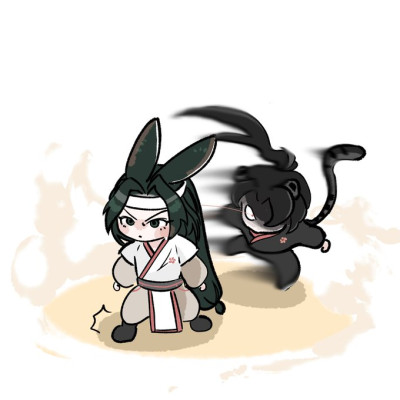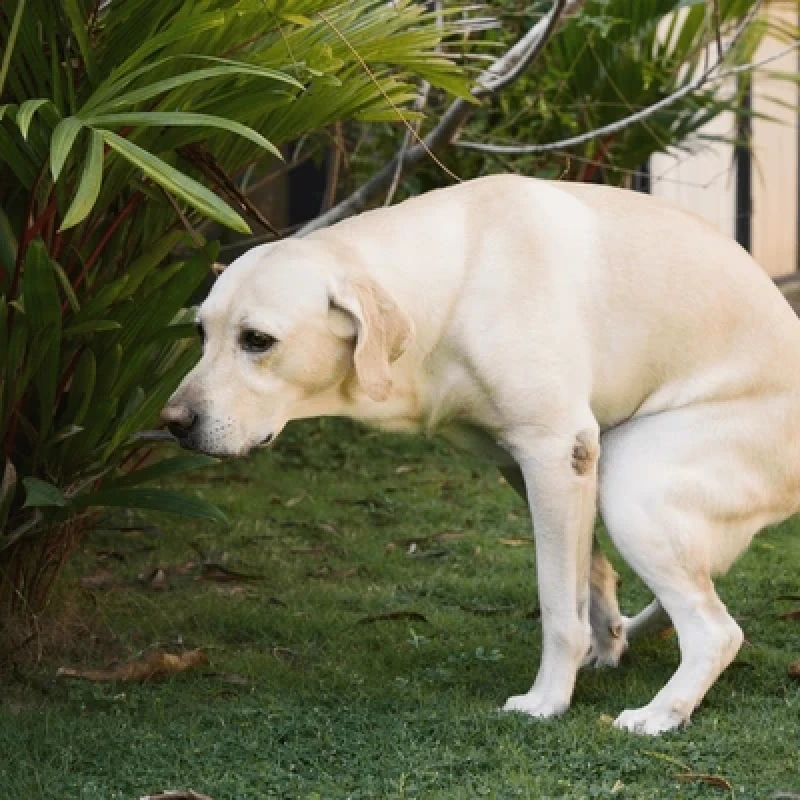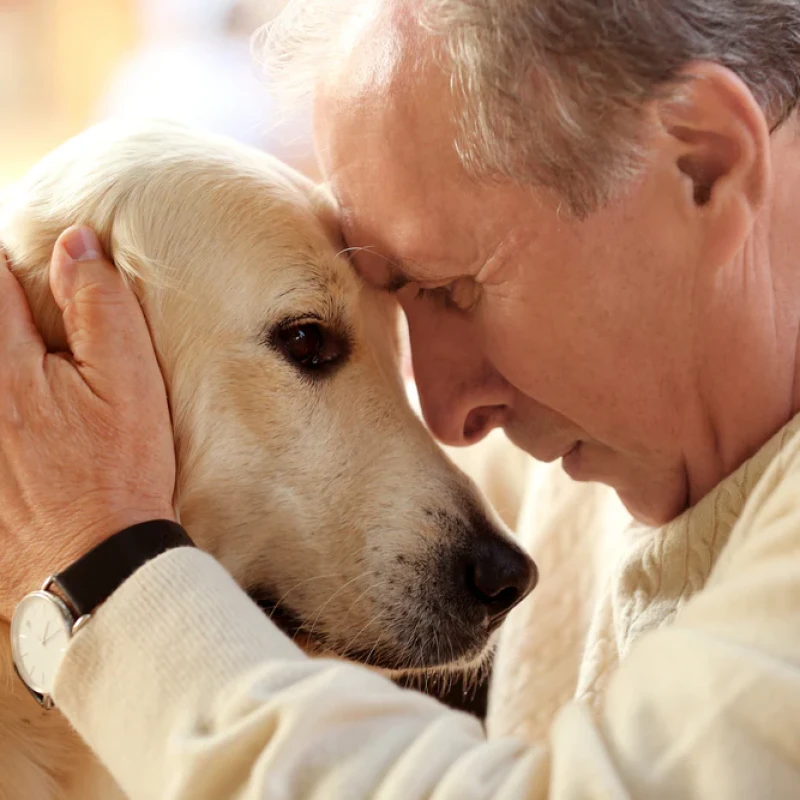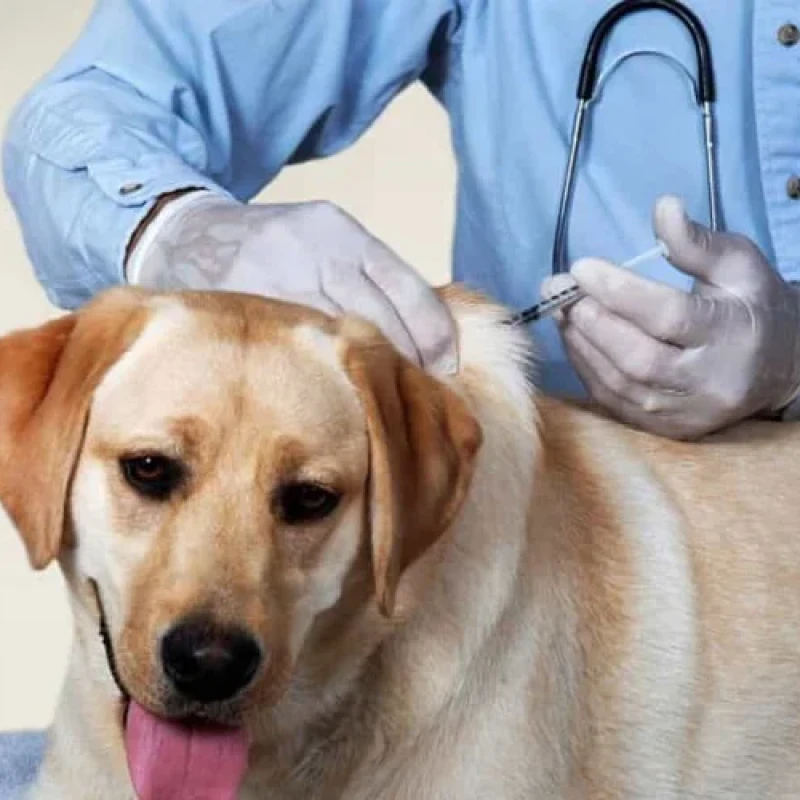The menstrual cycle of dogs occurs once every six months, resulting in two cycles a year. If you do not want them to have puppies, you should avoid letting them come into contact with other dogs for about 1-2 weeks after their heat period. The heat cycle in dogs (also known as the menstrual cycle) corresponds to the estrous cycle. Female dogs do not have monthly menstruation like humans. During this period, female dogs need to be closely monitored and cared for to maintain optimal health.
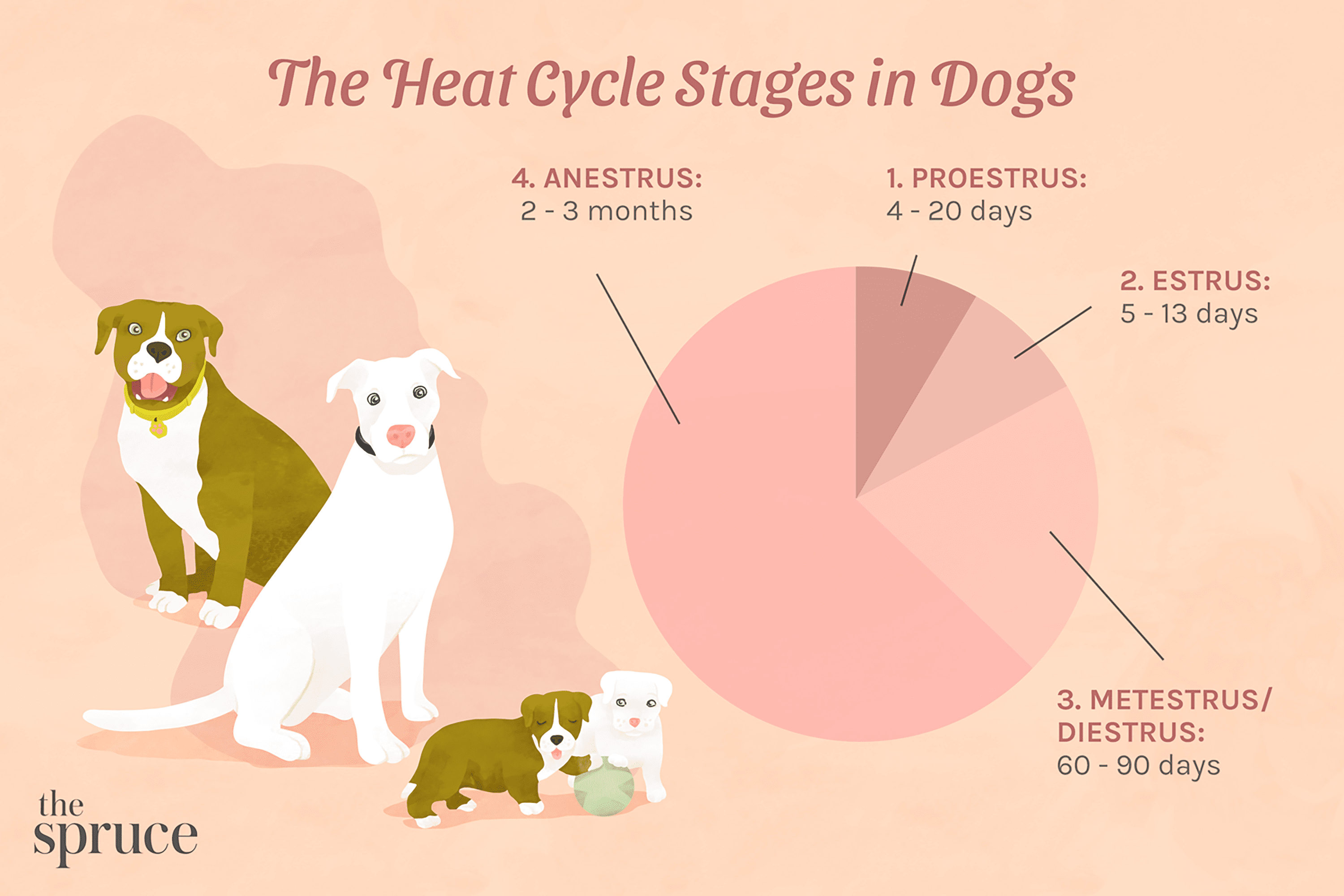
1. **Proestrus Stage:** This stage typically lasts about 9 days and is marked by an increase in estrogen levels in the body. The female dog will not accept male dogs' advances, but many signs of estrus may appear.
2. **Estrus Stage:** This stage usually lasts about 9 days. Estrogen levels decrease while progesterone levels rise. The female dog will begin ovulation, meaning a series of eggs will be released from the ovaries, ready for fertilization. The female dog will start to accept male dogs for breeding during this stage.
3. **Diestrus Stage:** The estrus phase of the female dog lasts about 2 months. Progesterone levels remain high, but the female dog will no longer accept male dogs' advances.
4. **Anestrus Stage:** This is the resting phase. It lasts until the female dog begins her next heat cycle.
**Signs of Estrus in Female Dogs Entering Puberty:**
According to veterinarians, the menstrual cycle in dogs occurs 1-2 times a year. The age when they begin estrus is typically 9-12 months, but this can vary depending on the breed and size of the dog. Unlike primates, female dogs do not have a menopause phase. They can experience estrus and become pregnant throughout their lives. However, the intervals between heats in dogs are longer than in primates.
The estrus cycle in dogs includes the stages: Proestrus, Estrus, and Diestrus. In each stage, the dog's body undergoes different hormonal changes:
- **Estrogen Hormone:** Initiates the heat cycle.
- **Luteinizing Hormone (LH):** Promotes ovulation.
- **Progesterone Hormone:** Maintains pregnancy.
**Proestrus – Before the Dog's Menstrual Cycle:**
Proestrus means pre-estrus. This stage averages about 9 days across all breeds of dogs, with a range of 4-15 days. During this time, the dog's vulva gradually swells, and brownish-red discharge may occur. In this proestrus phase, the female dog’s body is preparing for a potential pregnancy. Most female dogs will not accept males at this point; however, there are some exceptions. This is the most common cause of mating errors. Estrogen levels begin to rise about one month before the proestrus stage starts, peaking and then dropping at the end of this stage.
Most female dogs are very clean during their heat. They will quickly lick away any discharge from their vulva. Therefore, it is essential to monitor their licking behavior during their menstrual cycle. Some female dogs may have an abundant discharge without noticeable swelling of the vulva, while others may experience dangerous swelling due to a lack of discharge. Notably, larger dogs may not show any visible signs.
During this stage, female dogs often attract male dogs. Most female dogs tend to be quite casual about this. However, apart from those with experience, most will refuse to mate.
**Estrus – During the Dog's Menstrual Cycle:**
Estrus means the dog is in heat. This stage typically lasts about 8 days but can vary from 3-21 days depending on the breed. When bleeding stops and the vulva begins to soften, this marks the end of the proestrus phase and the beginning of true estrus.
During this time, the female dog may be more docile, with a swollen and reddened vulva and a pinkish or yellowish vaginal discharge. The function of progesterone is to soften the uterus, reducing contractions to help the embryo implant securely. Therefore, it is known as the pregnancy hormone or progestin. LH levels rise, stimulating ovulation within 2-3 days, making the female dog more receptive to male dogs. This is the best time for mating.
**Important Note:** Typically, during the menstrual cycle, there will be no bleeding. The vulva will not be fully swollen, but there may be some colorless or slightly yellow discharge. Female dogs in heat often follow male dogs and will engage in mating.
Generally, ovulation occurs on the second day of estrus. Therefore, mating on this day is the most effective. Mating before or after this point can still lead to pregnancy. After this period, estrogen levels drop, reducing sexual receptiveness, and the female dog may refuse to mate, even displaying aggression towards the male dog.
**Diestrus – After the Dog's Menstrual Cycle:**
Diestrus means after estrus; the female dog will no longer accept mating, and the vulva will shrink. This stage can last about 50-80 days, averaging around 60 days. Diestrus begins regardless of whether the female dog has conceived or is pregnant. During this stage, the dog’s body will respond as if it is pregnant, which can be recognized by signs of false pregnancy.
After Diestrus comes the resting stage, which can last from 130-250 days. Some breeds, like the Dingo and Basenji, have very long resting cycles and only one estrus cycle per year. During this time, the female dog will not engage in mating. The uterus is not yet ready for the next estrus cycle, serving as a resting phase for the body to prepare for the next heat cycle. This phase continues until the female dog starts a new estrus cycle.
**Signs of Estrus in Female Dogs:**
- **Mood Changes:** Some female dogs may experience mood swings shortly before their heat cycle.
- **Swollen Nipples:** Occasionally, the nipples and chest may swell slightly, which can also indicate a false pregnancy. This sign will disappear after a few weeks.
- **Male Dogs Approaching:** Male dogs can detect female dogs in heat from a long distance due to changes in their hormones.
- **Raised Tail:** When a female dog is ready to breed, she often stands still as a male dog approaches her vulva, raising her tail and wagging it from side to side to ensure the male detects her scent.
- **Swollen Vulva:** The vulva may swell slightly, but the degree varies among individual dogs.
- **Menstrual Bleeding:** This is usually the most definitive sign that the heat period has arrived. Light red blood in the first week will become darker during the breeding period and then return to red before stopping. Some female dogs are so clean that it can be difficult to detect estrus.
- **Vulva Size:** In heat, the female dog's vulva swells 2-3 times its normal size, allowing easy access for mating. Blood will change from bright red to a slightly yellow hue.
**Important Considerations During the Estrus Period of Female Dogs:**
- Monitor the female dog closely to prevent unwanted pregnancies, as male dogs can detect females in heat from a significant distance and are ready to find them.
- Be patient and gentle with the female dog, as she may feel uncomfortable during the pre-estrus phase.
- Avoid bathing the dog until bleeding has stopped to ensure that her cervix has closed, preventing urinary tract infections or vaginal infections from bath water.
- You can use dog-specific sanitary pads to avoid mess in the house.
- Consider spaying the female dog after her first heat cycle.
- Check for Brucellosis before breeding.
When you have determined the female dog's heat cycle and plan to have puppies, take her to the veterinarian to test for Brucellosis before the next heat cycle. Request testing for the male dog as well, as Brucellosis is a bacterial infection transmitted through mating and can cause infertility in both male and female dogs.
It is not advisable to breed a female dog during her first or second heat cycle, as the eggs may not be mature enough. It is best to breed the female dog during her third heat cycle or later, when she is about 1.5 to 2 years old and in good health.
⚠️ Frequently Asked Questions
Question: How many times does a female dog have a menstrual cycle in a year?
Answer: The menstrual cycle of a female dog typically occurs 1-2 times a year, corresponding with the estrous cycle. However, depending on the dog breed, weight, care regimen, and other factors, the duration and frequency of the menstrual cycle can vary.
Question: Do spayed female dogs still have menstrual cycles?
Answer: Spayed female dogs can still experience menstrual cycles, but not in all cases. Several factors influence whether a spayed female dog will have a menstrual cycle:
Spaying Method: There are two methods for spaying female dogs: surgical and medical. Surgical spaying is the most common method, involving the removal of the ovaries and uterus, which completely prevents the occurrence of menstrual cycles and related estrous signs. Medical spaying is less commonly used and involves administering hormone-containing medications to suppress ovulation and prevent fertilization. This method may not entirely eliminate menstrual cycles and can cause side effects such as uterine infections, breast cancer, or obesity.
Timing of Spaying: The timing of spaying also affects whether a female dog will have a menstrual cycle. If a female dog is spayed before her first estrous cycle (around 6-10 months old), it is very likely she will not have a menstrual cycle. If spayed after she has had at least one estrous cycle, it is possible she may still experience menstrual cycles. If spayed while in the midst of a menstrual cycle, there is a high chance she will continue to have menstrual cycles for a short period after.
Health Condition: The health status of a female dog may also influence whether she experiences a menstrual cycle post-spaying. Certain conditions, such as ovarian tumors, ovarian cysts, uterine tumors, or uterine infections, can cause vaginal bleeding in spayed female dogs. This is not a menstrual cycle but a sign of serious health issues that require prompt treatment.
Question: How should I care for a female dog during her menstrual cycle?
Answer: Caring for a female dog during her menstrual cycle is crucial for her health, reproduction, and well-being.
Maintain hygiene for the female dog. Clean the genital area with paper towels or a damp cloth daily to prevent infections. Consider using dog diapers to keep your home clean and prevent the dog from licking her genital area.
Limit contact with male dogs. If you do not want your female dog to become pregnant, avoid letting her interact with male dogs for about 3-4 weeks from the onset of her period. Keep her indoors or in a kennel, and supervise her when outside.
Monitor the health and condition of the female dog. Regularly check her genital area for abnormal signs like swelling, pus, foul odor, or excessive bleeding. Also, observe her mood and behavior to know when she is ready to mate or may be pregnant. Ensure she has regular veterinary check-ups and vaccinations for dangerous diseases.
Provide nutrition and water for the female dog. Ensure she has a balanced diet, not too fat or too thin. Provide plenty of clean water to maintain a stable circulatory and digestive system.
Question: Is it okay to bathe a female dog in heat?
Answer: Some people believe that a female dog in heat should not be bathed because it may cause her to catch a cold, get an infection, or disrupt hormone balance. They suggest cleaning her genital area with paper towels or damp cloths and using diapers to keep the house clean and prevent licking.
However, others believe that a female dog in heat can be bathed normally if she is well-cared for. They argue that bathing can make the dog feel comfortable, clean, and eliminate odors. It is recommended to choose shampoos that are suitable for the dog’s skin and coat, free from harsh chemicals or strong soaps. They also suggest bathing the dog in a warm place, away from drafts, and drying her fur immediately afterward. Therefore, you should consider carefully before deciding whether to bathe a female dog in heat. Monitor her health condition and reactions to adjust her care accordingly.
Question: Do female dogs in heat stop eating?
Answer: Female dogs in heat may stop eating or eat less than usual as a natural reaction of the body to hormonal changes. This is not too serious and will return to normal after the menstrual cycle ends. Ensure the female dog has a balanced diet, not too fat or too thin, and provide plenty of clean water to maintain stable circulation and digestion. Regularly check her eating habits for early signs of abnormalities.
Question: Is the menstrual cycle of Poodles different from other breeds?
Answer: The menstrual cycle of Poodles may differ slightly from other dog breeds but not significantly. Poodles typically begin their menstrual cycle between 6-10 months of age, similar to other small breeds. However, this timing can vary for each individual, occurring earlier or later. Poodles usually have 1-2 menstrual cycles a year, corresponding with their estrous cycle. Each menstrual cycle lasts about 3 weeks. However, the frequency and duration of the menstrual cycle may change depending on weight, care regimen, and other factors.



